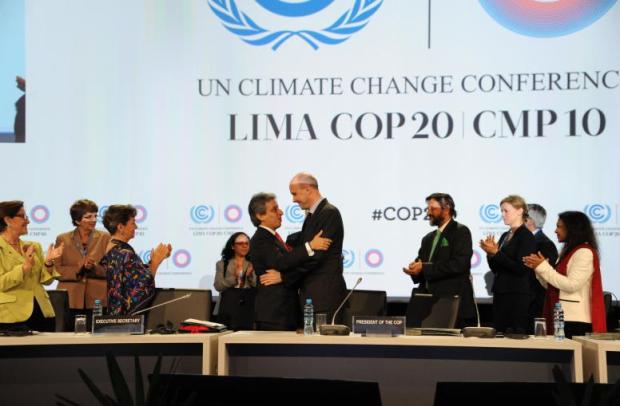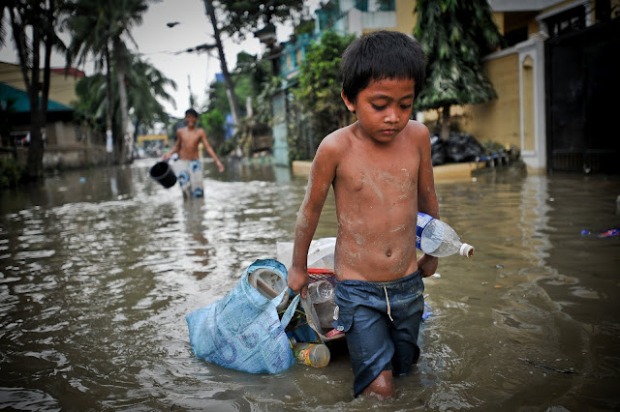by David Kavanagh
In less than two weeks, representatives from over 190 countries and a host of intergovernmental organisations, UN agencies and NGOs will meet in Le Bourget in Paris, France to discuss the future of the global approach to climate change.
The 21st Conference of Parties (COP21) is intended to run from November 30 to December 11 and will, for the first time in 20 years, aim to “achieve a legally binding and universal agreement on climate [change], with the aim of keeping global warming below 2°C.”
This event will continue the tradition of annual COP meetings strengthening the goals of the widely accepted United Nations Framework Convention on Climate Change (UNFCCC), which was introduced at the first Rio Earth Summit in 1992 and put into action two years later, and the 1997 Kyoto Protocol.
Both of these were designed to guide the stabilisation and reduction of international greenhouse gas emissions and general “dangerous human interference” with the climate system.
With expectations extremely high in the lead up to these talks, now is a good a time as ever to re-examine the issues, facts, and figures of climate change, all of which will need to be addressed for any meaningful progress to be made.

Last year’s COP20 talks in Lima paved the way for COP21. Source: euractiv.com
The world is heating up
According to the Organisation for Economic Cooperation and Development (OECD), the average global temperature could increase by between 3°C – 6°C by the end of the century if action isn’t taken soon.
In order to achieve the goal of limiting this rise to 2°C, net zero greenhouse gas emissions are required by 2100 and emissions need to peak by 2030 at the latest.
Unsurprisingly, last month was the hottest October ever recorded, and 2015 is right on track to being the hottest year as well.
Rising sea levels and increased likelihoods of weather-related disasters such as bush fires and droughts will have wide-ranging consequences in a litany of diverse areas including global health, poverty, and wildlife conservation.
Climate change hits the third world the hardest
The World Bank Group, an international financial institution that acts as the go-to development bank for many developing countries, stresses that climate change presents an unprecedented threat to the many advancements already made against global poverty, disease and hunger.
High temperatures, change in rain patterns, drought and other climate-related disasters pose massive risks for agriculture and food and water supplies around the world.
It has been predicted that by 2030, approximately 100 million people will have been pushed into poverty as a direct effect of the changing climate.

A boy walks through flooded streets in the Philippines. Source: newsecuritybeat.org
Global security threatened as well
These conditions will likely create what many describe as “climate refugees” or “environmental migrants” forced to move due to sudden or gradual changes in the natural environments where they live.
The predicted mass displacement and resultant migration of around 200 million people by 2050, many of which may hail from low-lying Pacific Island nations facing rising sea levels, doesn’t only affect the third world.
The question of who accepts these migrants, and what their intake will lead too internally, is a controversial one.
Unsurprisingly, the UN Intergovernmental Panel on Climate Change (IPCC) once suggested in its First Assessment Report that the large-scale movement of people might become the “greatest single impact” on world security.
So far, we’re not doing enough
Between 1990 and 2010, the only continent in which greenhouse gas emissions were reduced was Europe. At a global level, emissions continue to rise.
While over 150 governments have submitted Intended National Determined Contributions (INDCs), the main way through which they present their intended course of action to the international community, to the UNFCCC, the current figures would not be enough to prevent world temperatures from exceeding 2°C.
Furthermore, since INDCs are not in any way legally binding, and because governments have to balance national priorities against the collective global agenda, many governments seem to be falling short of their commitments.

If change is to be made, the 50,000 participants, of which 25,000 are government representatives and officials, will have to work together at COP21 to find ways to step up their game and stringently abide by bolder emission reduction targets.
Most increased global emissions will come from a handful of nations
OECD countries such as Australia, the US, and the UK are expected to continue to emit the highest amount of emissions per capita, with the former at the forefront.
However, the BRIICS (Brazil, Russia, India, Indonesia, China, and South Africa) will likely be the reason world emissions increase over the next 30 years.
This is because, while economic growth and expansion slows down in the developed West, the populations and GDP per capita of these countries are rapidly rising.
Industrial expansion and economic development is a key cause of increased carbon emissions.
Energy is killing us – we need to focus on renewables
Energy attained from coal and natural gas accounts for over 60% of global greenhouse gas emissions, with that figure predicted to increase to 78% by 2050 from 2005 levels if nothing is done about it.
At the same time, an expected increase in the demand for cars around the world and in developing nations particularly will likely lead to the emissions from transport doubling to 40% by 2035.
Low-carbon or renewable energy sources can help economies grow while at the same time mitigating the effects of climate change.

Solar and wind are important sources of renewable energy. Source: wired.co.uk
Encouragingly, according to the World Wide Fund for Nature, renewable energy is on the way to becoming the “third largest industrial sector” in the world and, since 1990, clean energy has grown at an annual average of 2.2%.
That said, renewables represent only 13.5% of international energy supplies, with fossil fuels at 81%.
Global cooperation, at both state and civil levels, is key
Climate change and global warming is, to everyone in the world, an existential danger.
Importantly, given its borderless nature, climate change is not an issue that any one country can handle successfully on its own.
Compromise and cooperation from all actors in the international community is incredibly necessary and COP21 will hopefully play a key part in ensuring more is done.
In many ways, it is also up to members of civil society to demonstrate and show their public representatives that this is an issue worth fighting for.
For more of this kind of content, follow Journalytic on Facebook or Twitter